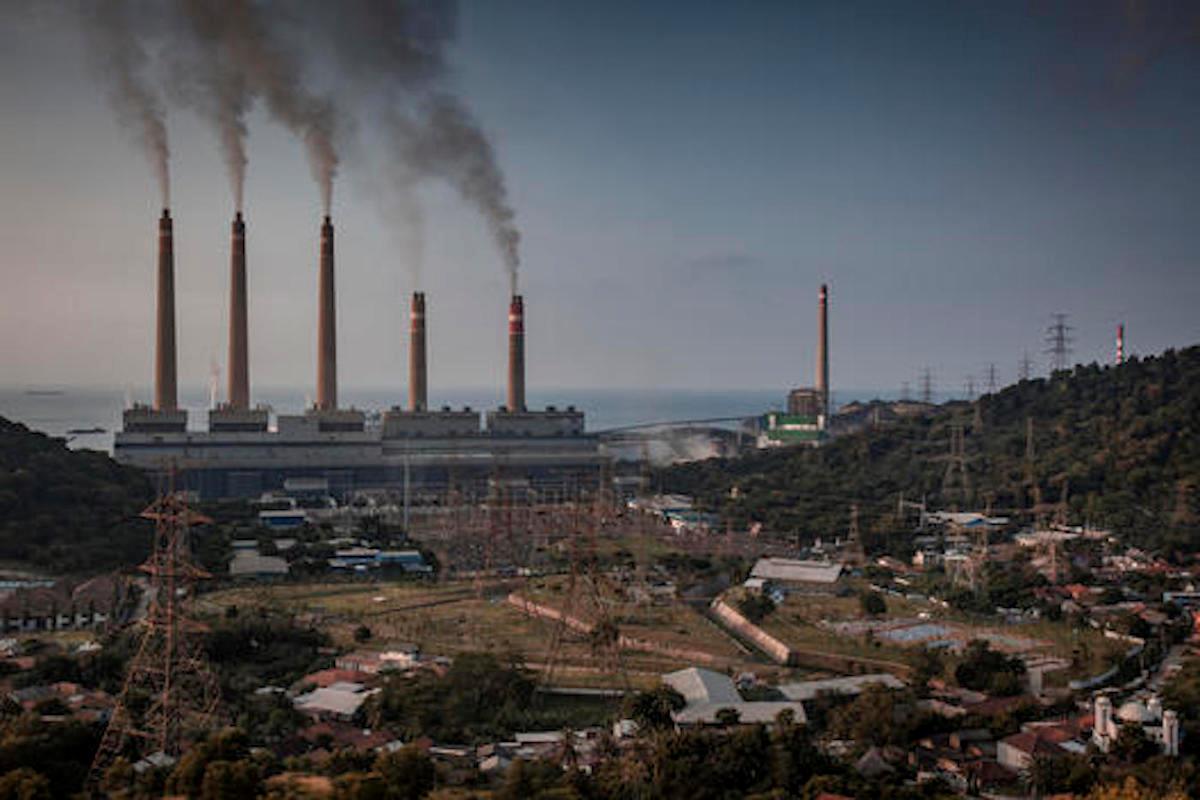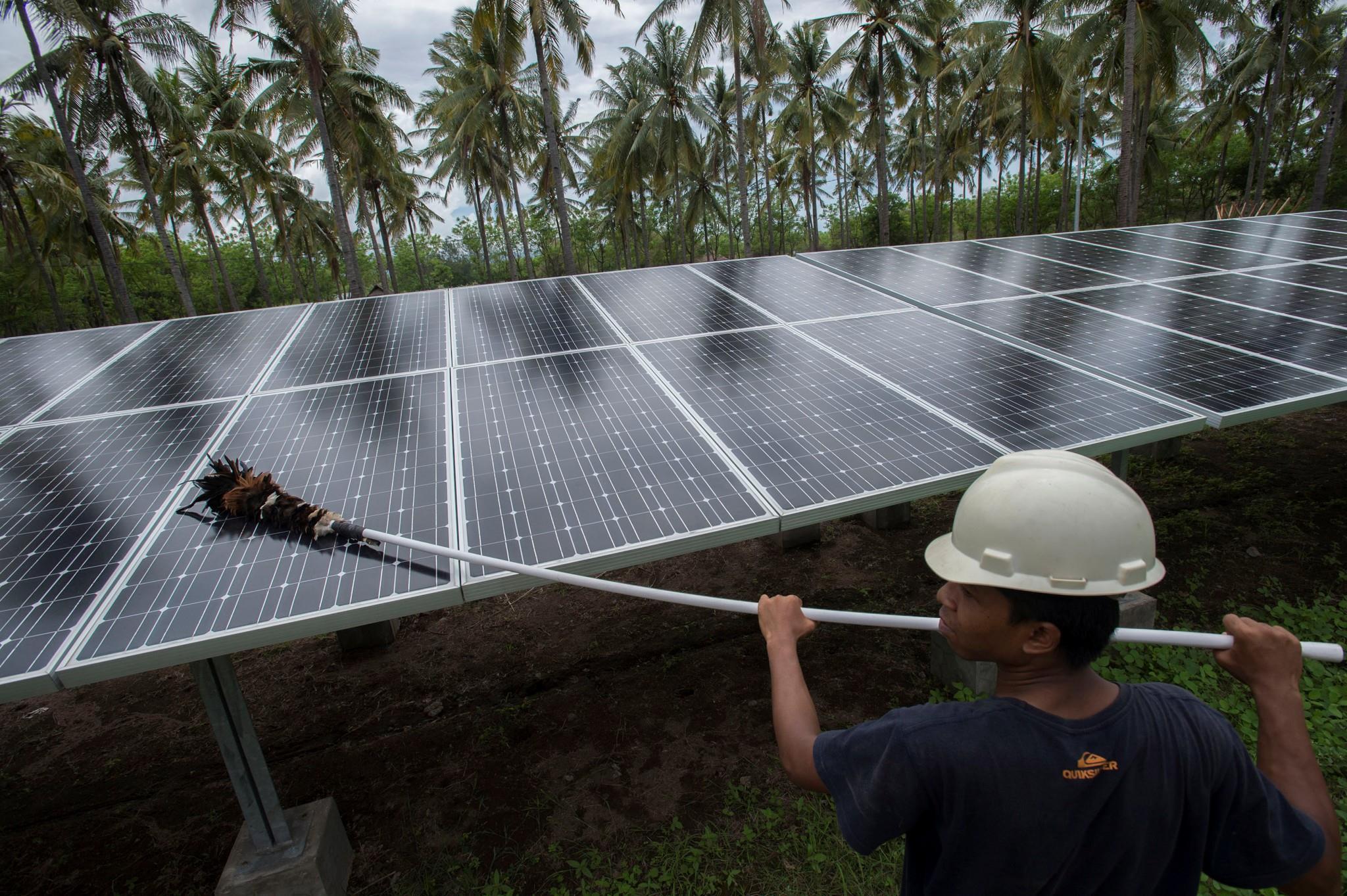(MENAFN- Asia Times) JAKARTA – Indonesia stands to benefit from an ambitious US$17 billion project to lay a 4,500-kilometer high-voltage direct current (HVDC) electricity cable from a sprawling solar farm in Australia's sun-drenched Northern Territory to Singapore through the Lombok Strait and the Java Sea.
Sun Cable, a joint venture between mining magnate Andrew Forrest and tech billionaire Mike Cannon-Brookes, would meet up to a quarter of Singapore's energy needs as well as potentially supply some of its power to Indonesia's two main tourist islands of Bali and Lombok.
Packing a 14,000-megawatt (MW) solar photovoltaics (PV) array and up to 33,000MW hours (MWh) of battery energy storage, the farm will be built on a cattle ranch near Tennant Creek, 750 kilometers south of Darwin, the Northern Territory state capital.
Under Indonesian cabotage rules, much of the 3,750-kilometer undersea section of the cable will have to be laid by an Indonesian-flagged ship on its planned path through the Indian Ocean to its entry into the Lombok Strait and then west across the Java Sea.
Singapore must still give the project the go-ahead, but it underlines the increasingly rapid strides being made towards a new era when renewables – and solar in particular – will gradually replace fossil fuel power plants across Indonesia and the wider region.
Singapore's Sunseap Group recently announced plans to install what will be the world's largest floating solar farm on a reservoir on Batam island, south of Singapore. Construction is expected to start next year and will take two years to complete.
Costing $2 billion, the 2,200MW facility and an associated 4,000MWh storage system will supply electricity to the Batam Industrial Development Authority and also through a second undersea cable to Singapore, which now relies on natural gas for 95% of its power.
Last December, a subsidiary of state-run Perusahaan Listrik Negara (PLN) and Abdu Dhabi-based firm Masdar began work on a $145 million solar power plant in West Java. PLN has reportedly agreed to pay 5.8 US cents per kilowatt-hour for its power, which compares favorably with coal.
Indonesia's national energy plan calls for 5,400MW of large-scale solar, ranging from 1,863MW on the main Java-Bali grid to 1,178MW in Sumatra, 781MW in Sulawesi, 563MW in Kalimantan, 426MW in Maluku, 389MW in Nusa Tenggara and 141MW in Papua.
Also on the schedule is 28,200MW of floating solar, planned for 375 reservoirs and lakes, and 3,610MW from rooftop solar installations on government and privately-owned buildings. Taken together, that is calculated to bring a reduction in greenhouse gases of 31.6 million tonnes.

The biggest solar farm in the world, covering 15,000 hectares, is planned for Tennant Creek in the north of Australia, with the power generated destined for Singapore, via Indonesia. Photo: AFP / Mischa Keijser / Cultura Creative
Known as the Australia-ASEAN Power Link (ASPL), the Sun Cable undertaking would be the world's largest solar farm and battery storage facility, occupying 15,000 hectares of land that gets more sustained exposure to the sun than almost anywhere in the world.
That title is now held by India's 2,245MW Bhadla Solar Park in Rajasthan, slightly larger than the state-owned Hainan Solar park in China, which went online in September last year. India, China, the United Arab Emirates and Egypt operate seven other solar farms of more than 1,000MW.
Despite its tropical climate, solar farms are more difficult to build in Indonesia because of its position astride the equator, where there are only eight hours of sunlight a day and where cloudy periods during the monsoon season inhibit electricity output.
Sources familiar with the project say engagement with Indonesia will begin through diplomatic channels and will likely seek to follow the regulatory path taken by the 4,600-kilometer Australia-Singapore fiber-optic cable (ASC), which was completed in 2018.
Following the lead of the ASC, where one branch of the cable comes ashore at Anyer on the eastern shore of the Sunda Strait, Indonesia is likely to push for an off-take agreement to supply some of the electricity to Bali and Lombok.
”There's no way for it to go through Indonesian waters without Indonesia getting some benefit,” says one project manager.“They won't get the necessary permits otherwise. But the Indonesians need to commit at the design stage. Any later and it becomes too difficult.”
The Australian developers say electricity from ASPL could also be routed to Indonesia via Singapore and existing liquified natural gas (LNG) over-capacity from Singapore could be redirected to meet Indonesia's new clean-energy needs.
Over time, with expansions to Tennant Creek's modular set-up, Sun Cable foresees the emergence of an inter-connected ASEAN-wide power network to meet a 60% growth in energy demand among the 10 member countries over the next two decades.
Perth-born Forrest, 59, the owner of the Fortescue Metals Group, and Cannon-Brookes, 41, co-founder and co-chief executive of software company Atlassian, have a collective net worth of more than $40 billion.

Australian mining billionaire Andrew 'Twiggy' Forrest. Photo: AFP / William West
Although Forrest made his fortune in Western Australia's booming iron ore industry and is reportedly sitting on vast reserves of hard-rock lithium, the mineral of the future for the electric car industry, he is also a dedicated philanthropist.
That extends to an intense interest in renewable energy. Fortescue recently formed an unlikely partnership with PT Adaro Energy, Indonesia's largest coal company in East Kaliman, to fast track the development of a global green hydrogen industry.
Forrest has also met with President Joko Widodo and Maritime Affairs and Investment Minister Luhut Panjaitan to discuss investing in geothermal and hydro-electric power as part of Indonesia's long-term goal of reaching carbon neutrality by 2060.
Last year, Fortescue announced it had set for itself a zero-emission target by 2040, with initial plans to run one of its mines on solar alone during the daytime and on battery overnight.
Planned for completion in 2027, the ASPL is costly because in some areas it needs to be buried deep enough in the seabed to ensure it isn't ripped up by ship anchors, as happened with the ASC cable a month after going into service.
The deepest section, at 1,900 meters, is in Indonesia's economic exclusion zone at the approach to the shallower Lombok Strait where cables carrying power from East Java to Bali have been vulnerable to ships dragging their anchors in the swift-flowing current.
The six seabed cables originally laid in 1987 have been whittled down to two, which now feed 200MW into the Bali network across a 2.6-meter-wide section of the busy strategic waterway connecting the Java Sea to the Indian Ocean.
The tourist island's other sources of power include 470MW supplied by diesel and gas generators and a 400MW Chinese-built coal plant on the northern coast. For cultural reasons, there is a ban on exploiting Bali's 320MW of geothermal potential.
PLN aims to achieve carbon neutrality by canceling all new coal-fired power contracts after 2022, increasing renewables in the national energy mix from the current 11.2% to 23% by 2025 and decommissioning the last of its coal plants by 2056.
As part of that plan, it expects to phase out 1,100MW of baseload diesel and gas power by 2025, 1,900MW of subcritical coal plants between 2030 and 2035, 34,000MW of supercritical capacity between 2035 and 2045, and the remaining 5,000MW of ultra-supercritical plants over the following decade.

The Suralaya coal power plant on May 4, 2019 in Cilegon city, Banten Province, Indonesia. Photo: Supplied
Supercritical and ultra-supercritical stations, all either under construction or built in more recent years, are driven by steam heated to a temperature that allows for more efficient power generation and helps reduce noxious emissions.
Indonesia's total energy production of 300 Terawatt hour (Twh) is now being boosted by another 120Twh, or 20,000MW, of fossil fuel capacity – part of the 35,000MW expansion program Widodo introduced early in his presidency to avoid power shortages.
PLN president director Darmawan Prasodjo, hand-picked by Widodo to head the utility in 2019, says with total production targeted to reach 1,800Twh by 2060, the government is committed to filling the 1,380Twh gap with renewables at an estimated cost of $500 billion.
According to the Jakarta-based Institute for Essential Services Reform (IESR), that is broken down to a required investment of $20-25 billion a year between 2021 and 2130, increasing to $60 billion a year between 2030 and 2060.
Renewables constitute 46% of the Ministry of Energy and Mineral Resources's (ESDM) updated 2021-2030 power program, with solar the energy of choice ahead of hydro, geothermal, wind and hydrogen because of the relative ease of construction.
Skeptics feel the program is overly ambitious, however, and ESDM Minister Arifin Tasrif said recently he was pessimistic about reaching the 23% target by 2025 because of the Covid pandemic, which has already delayed many infrastructure projects.
Ironically, while Indonesia maps out a carbon-free future, it will still be fossil fuels that transform the country into a modern industrialized state, spearheaded by the development of lithium batteries and other components for the electric car market.
But the writing is on the wall. Chinese nickel giant Tsingshan is now expected to build an NLG power plant at its Halmahera processing complex, switching from a previously-planned coal station similar to that which powers its other major center in Central Sulawesi.
Under pressure from the United States and other developed countries, the government is continuing to look for different ways to shorten its zero-emission target, which IESR believes can be achieved by the electricity sector as early as 2045.

An employee of PT Perusahaan Listrik Negara (PLN) cleans the surface of solar panels at a solar power generation plant in Gili Meno island, in this December 9, 2014 photo taken by Antara Foto. Photo: Agencies
Although carbon emissions aren't expected to peak until 2030, officials insist Indonesia will be on track to meet its low carbon commitment laid out in the 2016 Paris Agreement. But much will depend on international financial and technological support in cutting emissions by 142 million tonnes of Co2 a year.
With that in mind, Parliament is formulating a Renewable Energy Bill to provide a legal framework for potential investors, while the government is preparing a presidential regulation to lay out a clear tariff schedule.
Last June, Japan offered Indonesia and other Southeast Asian countries $10 billion in public funding for new renewable energy ventures and also to help them convert existing power station generators from coal to LNG.
Renewables may be less polluting, but there are growing concerns over their long-term environmental impact on forests and biodiversity and the depletion of water resources, which experts warn could lead to social unrest and legal challenges.
In a letter to the government last year, 35 global financial houses managing $4.1 trillion in assets criticized provisions in the 2020 Omnibus Law on Job Creation that it says could have severe environmental, human rights and labor-related repercussions.
Keeping the powerful coal lobby content, the government has increased this year's coal production target by 75 million tons, from 550 million to 625 million tonnes, without seeking to enforce the normal domestic market obligation (DMO).
As of June 30, however, exports had only reached 131.5 million tonnes, which has been put down to the impact of the Covid-19 pandemic, but which may also indicate a broader decline. That day is coming. It may be sooner than later.
MENAFN02082021000159011032ID1102555554